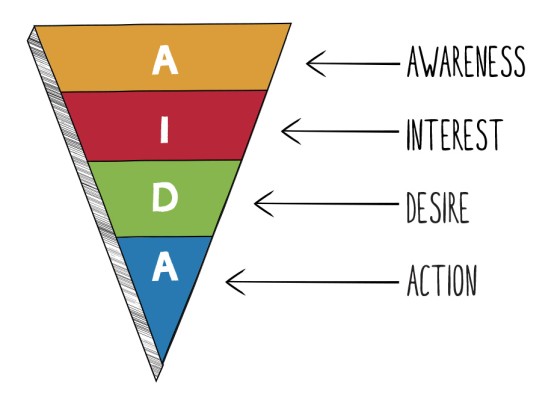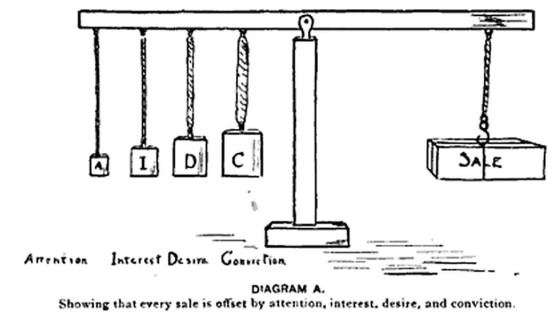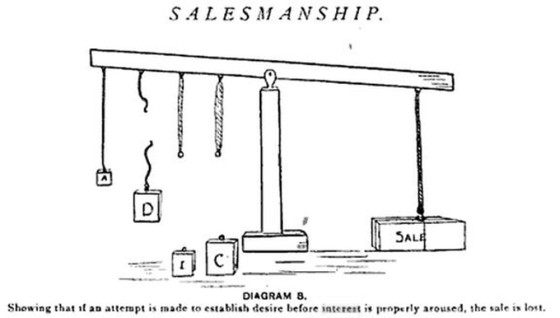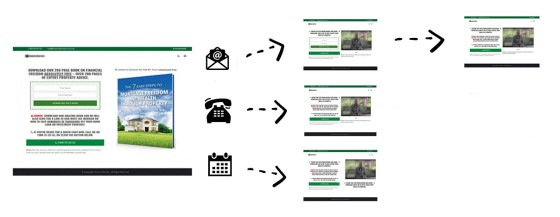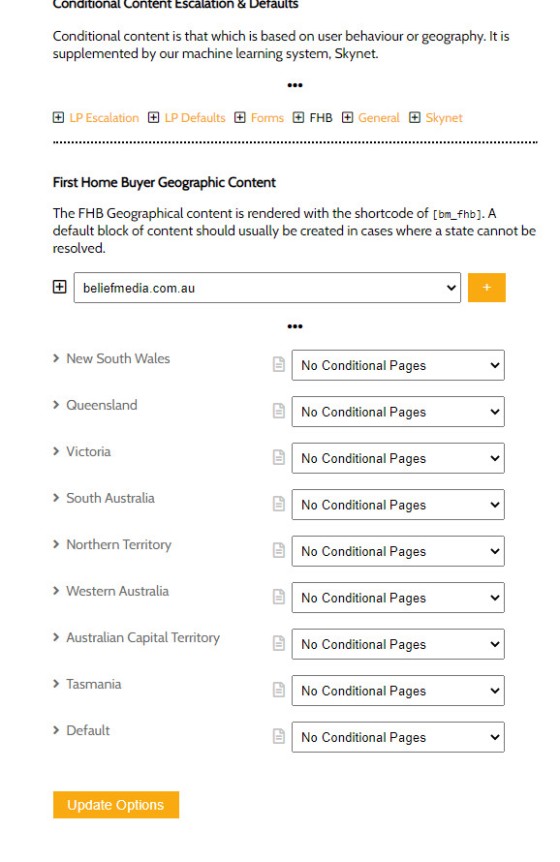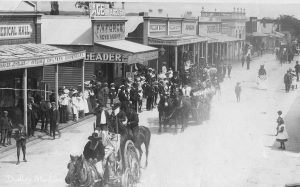The primary purpose of this article is to introduce the escalation of commitment ideology that underpins all our marketing, and further detail our conditional content methodology. The information comes to you as a precursor to an article that introduces our very affordably-priced mortgage broker website.
 digital marketing and social media system is the also the only program that delivers a rationalised product that doesn't require a plethora of third-party subscriptions, and it is the only product that is entirely fully integrated, future-proof, scalable, and cost-effective. Somewhat baffling to us is that we're still the only product that is fully compliant with the requirements and recommendations of ASIC's Regulatory Guide 234 (and source legislation).
digital marketing and social media system is the also the only program that delivers a rationalised product that doesn't require a plethora of third-party subscriptions, and it is the only product that is entirely fully integrated, future-proof, scalable, and cost-effective. Somewhat baffling to us is that we're still the only product that is fully compliant with the requirements and recommendations of ASIC's Regulatory Guide 234 (and source legislation).Our conditional methods are a big topic, and it's difficult to adequately articulate the scope of our systems with the attention span of the average reader, and it's also easy to confuse the topic as one that may appear complex. Keep in mind that the large number of features we provide will not always be used; your marketing funnel can be as simple or complex as you require. Your understanding and application of marketing will mature over time, and Yabber  supports your efforts in way that keeps pace with your scaled marketing efforts, and it constantly outperforms any other product on the market.
supports your efforts in way that keeps pace with your scaled marketing efforts, and it constantly outperforms any other product on the market.
In order to understand what conditional content is, and how escalation of commitment works, we have to revisit a few important topics. Before we introduce the conditional aspects of our broker website - and before we introduce the importance of having an integrated website - it's incumbent upon us to examine what a marketing funnel is and how it differs to a sales funnel.
What a Real Digital Marketing Experience Looks Like
The Sales Funnel - AIDA (The Wrong Stuff)
Some time back we introduced the broad concept of a marketing funnel and showed the simplified AIDA funnel illustration  which many mistakenly believe is indicative of the digital journey. While it remains a completely legitimate model, it's not entirely applicable to the online experience (and it is in no way suitable to describe a real marketing funnel). The problem? It's a linear, short-lived, and transactional experience - the funnel is also called a purchase funnel or sales funnel for this reason (the experience essentially terminates when a user vacates the page). The sales funnel is designed to emulate the linear transactional experience of a shopfront, and usually terminates with a purchase.
which many mistakenly believe is indicative of the digital journey. While it remains a completely legitimate model, it's not entirely applicable to the online experience (and it is in no way suitable to describe a real marketing funnel). The problem? It's a linear, short-lived, and transactional experience - the funnel is also called a purchase funnel or sales funnel for this reason (the experience essentially terminates when a user vacates the page). The sales funnel is designed to emulate the linear transactional experience of a shopfront, and usually terminates with a purchase.
Pictured below is the antiquated AIDA illustration. If you're using High Level, Click Funnels, Lead Pages, or any other offsite marketing asset, that low-performing interaction is based on the following model.
Pictured: The 'Sales Funnel' (not appropriate for the finance industry). With the emergency of various digital advantages the sales funnel is still applicable as a big-picture and long-term model, but it is absolutely not a Marketing Funnel.
This low-performing linear transaction has been applied to the finance industry simply because of the poor quality of representation in the space. A marketing funnel is an immersive and relevant journey designed to escalate or 'develop' the user into a client... and the experience continues long after they have interacted with a simple landing page. Having an email follow-up program simply isn't enough - you have to shape a journey for each specific funnel participant, and you should be providing an educational and entertaining ride that'll set you apart form the competition that is also vying for buyers' attention.
Bottom line: the experience you've had some folks tell you is a 'secret system' for years is in fact far less effective than the systems we introduced in 1997.
The Marketing Funnel (The Right Stuff)
The 1904 magazine "Salesmanship" says  that "... a sale of any kind has four essential parts: Attention, Interest, Desire, and Conviction. Take these in their proper order. Do not mistake polite attention for interest and do not assume when a desire for possession is aroused that conviction has been reached. In loss of sales it is as disastrous as to not close the sale when conviction is reached". Not unlike Tesla and others, it appears the contribution to the concept has been lost over time.
that "... a sale of any kind has four essential parts: Attention, Interest, Desire, and Conviction. Take these in their proper order. Do not mistake polite attention for interest and do not assume when a desire for possession is aroused that conviction has been reached. In loss of sales it is as disastrous as to not close the sale when conviction is reached". Not unlike Tesla and others, it appears the contribution to the concept has been lost over time.
Pictured: Frank Hutchinson Dukesmith's 1904 model of sales from "Salesmanship" magazine. Rarely credited with any contribution to the modern day AIDA model (Attention, Interest, Desire, Action), Dukesmith published a model with Attention, Interest, Desire, and Conviction offset by the Sale.
Withstanding the test of time, Dukesmith's concept is unique (and arguably more accurate) than the funnel approach because it illustrates the weight of each component, and demonstrates that each step in the sales process is a dynamic time-variable and conditional object (as pictured above). Just like a real scale, the timeline (and weight of each step) will likely vary depending upon circumstances, time, interest, competition, and the demonstrated attributes of EAT - Expertise, Authoritativeness, and Trust.
Pictured: The non-gravitation 'weighted' model of a sales journey is more like the digital experience. Applying effort to any one component of your digital efforts in isolation may collapse any potential sale. This doesn't mean that you don't 'work on what works' - it simply means that the periphery has to exist and support your primary digital program.
From a very old article on Marketing Funnels we had to the following to say:
We've built upon these ideas (with reference to Dukesmith's scales) and developed our own approach. It's our unique and somewhat proprietary approach that has seen us curate some of the most effective sales experiences on the market. Our approach to the funnel is based on the cybernetics of human psychology and takes into account the transdisciplinary interaction of online behaviors. We include other 'steps' such as research, knowledge, evaluation, intent, commitment, loyalty, advocacy, trust, retention, and so on. As a result of digital technology, online advertising, social media, etc., the AIDA model - while still relevant - is far less reliable as a standalone framework.
So, the typical landing page experience that most associate with a 'funnel' barely resembles anything like a high-end modern funnel. We have the capacity to re-target audiences, follow people around on multiple platforms, provide conditional content, and serve relevance based on known interactions. Think of a funnel as a three-dimensional object with multiple layers each representing a touch-point; it starts to become clear that if your landing experience and other interactions aren't interconnected your 'journey' is lost into a void.
Integrating your website with known interactions and behaviours is a significant means of establishing funnel escalation. in fact, it is not possible to provide a true funnel experience without integrating your website experience.
As we'll come to describe, a real Marketing Funnel has the capacity to serve specific content to specific user, identify past interactions such as downloads or subscriptions and escalate content, or we might alter our Facebook banner based on trending website traffic. In some cases we might even send an SMS message on the basis of a user visiting a specific webpage or clicking on a particular link. Page and link triggers can course-correct a funnel journey, and your website connects itself to your email campaigns. All of this (and more) is done in a turnkey fashion, and all of our funnel-based conditional actions have the potential to explode your organic and paid traffic.
Every Page is a Landing Page (and Why Third Party Services Suck)
There's barely a single article where we haven't stated the following: every single page on your website is a 'type' of landing page, and therefore every single page on your website need to provide a conversion opportunity. Every single page.
If a user lands on any page of our website it is incumbent upon us to provide an offer or some kind and ingest them into our funnel journey - providing fluffy generic information simply isn't enough. Our website should be designed to convert traffic.
Why would any business send promoted traffic to somebody else's website when they have the capacity to serve that page themselves, and why would any data-drive business sacrifice its data to an off-site resource where the information can't be used to escalate a visitor or funnel participant?
For about the hundredth time, I need to make one of those points clear that seriously grinds me gears: no self-respecting marketing representation will ever recommend High Level, Lead Pages, Click Funnels, or any off-site resource. Apart from the compliance issues, the method simply doesn't perform nearly as effectively as an on-site hosted experience.
Read the following for more information:
- Every Page on Your Website is a Landing Page. This article reinforces the principals already introduced. Traffic can come from anywhere.
- Include Subscription Forms on Every Page of Your Website. Since traffic can come from anywhere, it stands to reason that we'll try and do something with them.
- Why You Should *Never* Have a Calendar On an Entry Landing Page (But Why You Must Include It). If traffic comes from anywhere, and since we want to convert them, of course we're required to provide an integrated Outlook calendar on every page.
- Why Your Page Subscription Ratio Is Important. We measure all website statistics, and the PSR, or Page Subscription Ratio, is the ratio of those that land on our site measured against total page traffic. We'll always endeavour to improve upon this feature. If you see a high PSR on a particular page it suggests you should steer your content generation strategy in a particular direction.
Reserving conversions for landing pages is just absurd. While every page is designed to convert (or should be designed to attract subscriptions or phone calls), the landing page is free from distraction and serves as the partial promise or fulfillment or a promoted campaign.
As we'll introduce shortly, it is this on-site, self-hosted, self-managed and integrated (one-click) experience that allows us to collect the user information necessary to provide a conditional and escalation-based journey. Given its importance, we make an enterprise-level mortgage broker website  available to our subscribers so they're able to easily and quickly implement high-end digital programs that far exceed that of their competition. Instead of paying tens-of-thousands we make our mortgage broker website available for less than what you would pay for an entry-level designer to build you a ten-page product.
available to our subscribers so they're able to easily and quickly implement high-end digital programs that far exceed that of their competition. Instead of paying tens-of-thousands we make our mortgage broker website available for less than what you would pay for an entry-level designer to build you a ten-page product.
Your website is the single most important digital asset you have at your marketing disposal, and you have the capacity to make it come alive with dynamic resources and content that literally provides an 'experience' every time a user visits.
Conditional Content
This section details limited components of the Conditional Content features of the website we provide our mortgage brokers. It is not a definitive list by any means, but it does details the more popular features. Keep in mind that many (or even all) of the features introduced might be reserved for a time when your marketing matures.
Introduction
The Escalation of Commitment, or the deepening of a lead in our marketing funnel process, is guided in part by way of Conditional Content. The conditional content features shapes itself around a client to serve them with email, downloads, offers, and website page content that is tailored specifically towards their known interest types. For example, if it's determined that a lead or website visitor is interested in First Home Buyer information, our content shapes itself around that understanding and starts to serve First Home Buyer information. We've used this conditional content technique for well over a decade, and it's part of the reason our clients see far better Facebook and other promoted results.
Conditional Redirections
Conditional redirects are detailed in an article titled "Landing Page, Panel, and Form Conditional Redirections Explained". Based on our integrated calendars on every single form on every single page, we're able to serve a second page that is most appropriate given the first page engagement type. The second page is time where we already have the users' details, and we're able to potentially escalate their commitment, or show them more relevant information.
Pictured: We may optionally send a user to the extremely important and high-converting second page on the basis of type of form interaction. Note that there's one important calendar field that is required, but often excluded from calendars that aren't integrated in nature (including it will absolutely convert more clients).
The purpose of any funnel is to get as many people into the experience as possible (so never ever ask conversion-blocking quiz-style questions). Once you have a name and email, and the user is at top-of-funnel, redirect to a second page with purpose, and one that is designed to escalate.
Escalating Forms and Landing Panels
When a user subscribes to a form or landing panel (basically a side-by-side form and magnet combination), why would we show them the same offer or form if they've already subscribed to that asset? We don't of course... or at least we don't. We apply optional form escalation and landing panel escalation to cycle through a group of forms and/or offers.
In more advanced cases, the form that is initially shown to a user, or one that becomes known to them during their browsing experience, is determined based on the users' resolved interest type. This means we're showing the type of content that is most likely to convert.
Geographic Content
Geographic conditional content is that which is shown based on a resolved Australian location. In most cases, this is content directed at First Home Buyers, although it may be any content of your choosing.
Pictured: First Home Buyer Conditional Content. In the pictured example we haven't selected any content for geographic users. Small sections of content are created via an alternate panel and then the content is simply assigned to each state. A default option exists for cases where geographic location cannot be resolved.
Using our simple one-click landing page creation tools in combination with our proprietary conditional redirects, we can start to build upon that "Make the Second Page Landing Page Great Again" mantra means a little more with placeholder text relevant to that user. Since the second page is served on the basis of knowing certain information about a user (at the very least their name) we're able to use this information to build pages with an entirely appropriate and personal response.
Placeholders that can be used anywhere on your website includes the following: %%firstname%%, %%email%%, %%phone%%, %%mobile%%, %%day%%, %%date%%, %%longdate%%, %%year%%, %%start%%, %%end%%, %%cityname%%, %%region%%, %%country_name%%, %%latitude%%, %%longitude%%, and %%postcode%% (other data is recorded in a cookie but it's unlikely to be returned to a user's screen). It's the landing experience where the passage from one page to another makes appropriate placeholders entirely predictable... although you may use them on any page (usually via the shortcode discussed shortly).
As an example of how we might use location-based redirections, we've resolved your state to be Ohio (if we were unable to show your location we'll show 'Unknown'). Other geographic data is less accurate although we're working on making it more user-friendly. Your resolved city of Dublin and 'nearest' postcode of is probably way off... although the returned coordinates are often suitable for finding a nearest broker or franchise office.
While not entirely accurate (just yet) we might further discriminate between the type of content we serve to different areas of the same region - such as the Eastern and Western suburbs of Sydney (in the same way we'd rarely serve the same advertising to the same areas of the same city). This feature is currently a Platinum-only module simply because it generally requires expert oversight.
Because not all placeholders apply to the same user, you may conditionally serve specific content if various fields are known via our [conditional] shortcode (introduced next).
Conditional Panel Content
Conditional panels are blocks of content based on user interaction and known behaviour. Based on browsing behaviour, or forced via actions such as email link clicks or other triggers, the content that occupies conditional blocks are returned based on what the user is most interested in seeing. Conditional content is the foundation upon which escalation of commitment is guided, and the method absolutely returns more clients and conversions.
Those knuckleheads that are responsible for the flawed messaging suggesting your website isn't important really don't understand what a marketing funnel is meant to feel like. Your website becomes a hub of information and resources you will send the funnel participant, and each time they come back to your website it'll be shaped based on our new understanding of their needs.
The conditional content features we've just described, like all the conditional features, will have a transformative effect on your business.
BeNet
BeNet is the small but highly efficient back-end system that constantly evaluates your audiences as a whole, and each individual user - identified or otherwise - in order to resolve their interest types and most likely browsing or buying patterns. Yabber can submit information back to your website even if no specific option has been defined in order to serve the most relevant information. Of course, the information we send has to be defined in the first place, but if it is we're able to perform all sorts of content trickery.
BeNet is an opt-in module in that one has to specifically accept the terms before their one-click enabling of the feature. Because it's an AI engine the system usually needs 'large' amounts of information in order to function efficiently, and we tend to be rather conservative and only submit suggestions back to your site when we establish a high 'probably certainty'.
Off-Site Conditional Content
Conditional content is usually tailored to a user, but the system also identifies trending herd behaviour; what are the majority of your users looking for? As described in the articles listed below, we're able to alter YouTube banners and playlists, or Facebook banners and profile pictures based on trending consumer interest.
You can read more about these features via the following links.
- Changing Your Facebook and YouTube Banners Based on Website Traffic. Change your Facebook banner and/or picture based on identified website traffic.
- Automatically Update YouTube and Facebook Banners and Profile Pictures Based on Events. Change your YouTube banner and/or playlists based on identified website traffic.
We try and integrate as many off-site experiences as possible into your funnel.
Other Conditional Features
Conditional features are extensive. Many features are 'hidden' and only released when called upon - this is done to removed perceived complexity (in most cases the advanced functionality is only used when we manage campaigns ourselves). Some other features just add to the complexity of this article, such as the conditional features returned on the basis of a subscription (one of the advantages of fully integrated calendars).
Conclusion
Marketing is meant to be a dynamic and enjoyable experience for businesses and those participants of your funnel. Sadly - and we see this in the finance industry more than anywhere else - many gravitate towards those awful and usually High Level or Lead Page products, or even worse, they'll gravitate to non-compliant pay-per-lead lead generation services. Brokers are costing themselves an inordinate amount of business volume simply because the system they're sold is exceedingly poor.
If there are four takeaways from this article they'd be summarised as follows:
- Never ever use an offsite service to host landing pages.
- Every single page on your website is a type of landing page and should be treated as such.
- Every single page on your website should ideally include a conversion opportunity and offer.
- Include conditional features into your website so your site becomes a true funnel asset.
The points above will improve upon your conversions in amazing ways (often up to 500% or more). Remember, the majority of the paid products and services that are made available to the market are somewhat ridiculous in nature in that they actually have a seriously detrimental impact on your broad marketing programs - they become a technical debt, and one you'll have to replace when your marketing itself escalates and matures. For some reason the industry is accepting mediocrity as a new standard. It's bizarre.
Again, this article was necessary to support our article introducing our mortgage broker website. While the website may not appear overly different, it's the integrated features that have a massive impact on the success of your funnels and campaigns. We implore you, ignore those competing messages from the pretenders suggesting your website isn't important, or doesn't need to be optimised before embarking on a paid campaign. Nothing is further from the truth; we find these messages touted by the charlatans that are looking to assign value their mediocre Facebook advertising programs.
The conditional content features are a staple of a good marketing funnel, and a necessity for an enjoyable and immersive marketing journey. They'll change your digital business.



